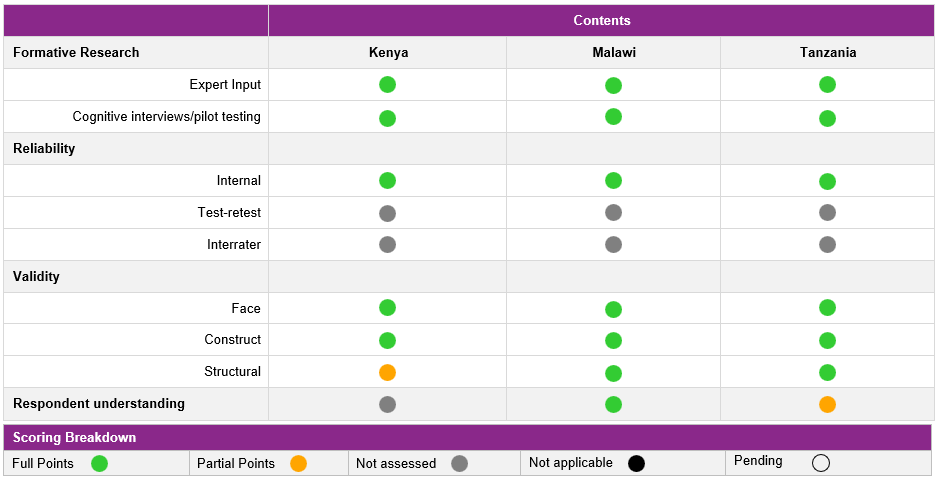Improving women’s ability to define goals and act on them is an important and urgent policy goal. Yet our understanding of how to achieve this goal is hampered by the lack of adequate measurement tools and recognized best practices. This 8-item scale allows to capture an individual’s goal-setting capacity. Goal-setting capacity is a process that establishes specific, time-based behaviors that are measurable, achievable, and realistic. They can be related to both economic and non-economic activities. In terms of timing, they can be short-term (e.g., saving money for a small household purchase, learning a new skill) or long-term (e.g., saving money for a large household purchase, achieving some level of education). Other variables that you may want to collect alongside goal-setting capacity are education level, employment status, age, and MAGNET’s livelihoods self-efficacy scale.
Link to: tool content and guidelines, CTO file, and statistical annex
Duration: This tool takes on average 2.35 minutes to be implemented
Permitted use of the tool: all users are free to use the tool with citation: “MAGNET (2023). Goal-setting Capacity Scale. https://magnet.ifpri.info/goal-setting-capacity-scale/”
Tool sample
ENUMERATOR READ: Now I’m going to read you some statements about goal-setting. Please listen to each statement and tell me if you completely disagree, mostly disagree, neither agree nor disagree, mostly agree, or completely agree with the statement.
- I set short-term goals for myself.
- I set long-term goals for myself.
- I set specific, clear goals for myself.
Response Options
1. completely disagree 2. mostly disagree 3. neither agree nor disagree 4. mostly agree 5. completely agree.
Measurement properties
- Geographies Tested: Kenya, Malawi, Tanzania
- Populations included: Female, Male
- Age range: Adults
For details on these testing metrics, visit our scoring methodology page.

 International Food Policy Research Institute
International Food Policy Research Institute